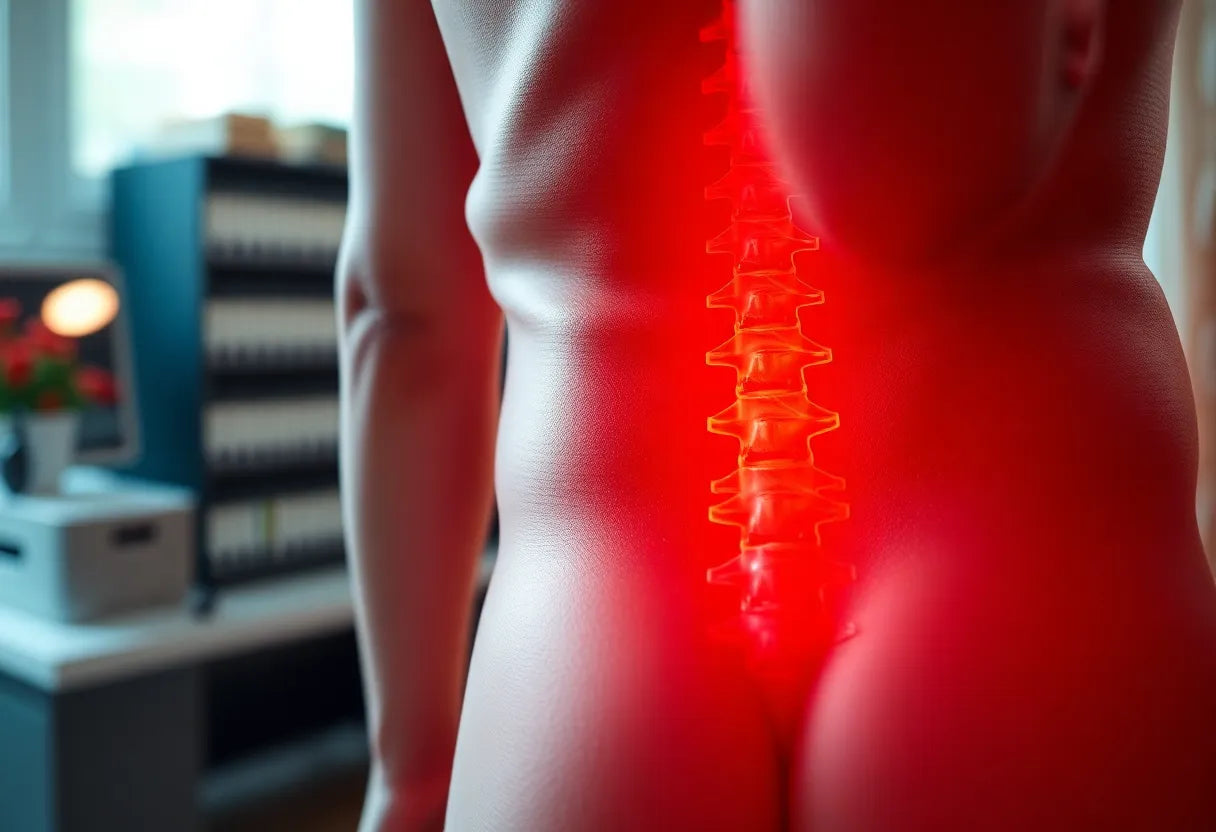Dealing with a herniated disc in the neck can be a daunting experience, especially when it disrupts daily life with persistent pain and discomfort. A cervical herniated disc occurs when the soft inner gel of a spinal disc in the neck region protrudes through its tougher outer layer. This can lead to nerve irritation or compression, resulting in a range of symptoms. Commonly, individuals experience neck pain, arm pain, numbness, or tingling sensations radiating down the arm. In severe cases, muscle weakness may also occur, highlighting the need for timely intervention to prevent long-term complications.
the role of surgery in treating cervical herniated discs
When conservative treatments like physical therapy, medications, or injections fail to provide relief, surgery for a herniated disc in the neck may become a viable option. Surgical intervention is typically considered when symptoms persist despite non-surgical efforts, or when neurological deficits such as muscle weakness or significant numbness develop. The primary goal of surgery is to alleviate nerve compression, thereby reducing pain and restoring function.
There are several surgical options available, each tailored to address specific conditions and patient needs. The decision to proceed with surgery is not taken lightly and involves a thorough assessment by a specialist. It is crucial to weigh the potential benefits against the risks and to consider personal health factors and lifestyle when choosing the appropriate surgical path.
navigating the decision-making process
Opting for surgery involves a careful decision-making process that should be guided by expert consultation and personalized care. A specialist will evaluate the severity of the herniated disc, the extent of nerve involvement, and the overall impact on the patient's quality of life. This comprehensive assessment helps determine whether surgical intervention is the best course of action.
Personalized care is paramount, as each patient's situation is unique. Factors such as age, activity level, and overall health play a significant role in shaping the treatment plan. Consulting with a skilled specialist who understands the intricacies of cervical spine issues ensures that the chosen approach aligns with the patient's specific needs and health goals.
In conclusion, addressing a herniated disc in the neck through surgery can be a significant step toward relief and improved quality of life. Understanding the condition, exploring surgical options, and engaging in a thoughtful decision-making process are essential components of navigating this journey. As we delve deeper into the specifics of surgical techniques and outcomes, it becomes clear how critical expert guidance and personalized care are in achieving successful results.
typical surgical options for cervical herniated discs
When it comes to addressing a herniated disc in the neck through surgery, several options are available, each with its own set of benefits and considerations. Understanding these options can help patients and their healthcare providers make informed decisions based on individual needs and circumstances.
anterior cervical discectomy and fusion (acdf)
One of the most common surgical procedures for treating cervical herniated discs is anterior cervical discectomy and fusion (ACDF). This procedure involves making a small incision in the front of the neck to access and remove the herniated disc. Once the disc is removed, the adjacent vertebrae are fused together using a bone graft and sometimes metal plates or screws to stabilize the spine.
ACDF is well-established and effective at relieving nerve compression and associated symptoms. However, patients should be aware that this procedure may reduce neck motion post-surgery. Despite this, many find the trade-off worthwhile due to the significant relief from pain and discomfort.
artificial disc replacement
Artificial disc replacement is another surgical option that aims to preserve neck motion. In this procedure, the damaged disc is removed and replaced with a prosthetic disc, allowing for continued movement between the vertebrae. This option is particularly suitable for patients who are younger, more active, and whose clinical profiles align with the procedure's requirements.
The primary advantage of artificial disc replacement is the preservation of natural neck motion, which can be a significant benefit for patients looking to maintain an active lifestyle post-surgery.
posterior cervical approaches
For cases where access from the back of the neck is necessary, posterior cervical approaches, such as posterior discectomy, may be utilized. These minimally invasive techniques are often indicated for multi-level disease or specific herniation locations that are best accessed from the posterior side.
Posterior approaches can be beneficial in reducing recovery time and minimizing tissue damage, making them an appealing option for selected patients.
cervical endoscopic foraminotomy
Cervical endoscopic foraminotomy is a less invasive surgical option that uses small incisions and endoscopic tools to remove disc material. This procedure is ideal for patients who meet specific criteria and are looking for a minimally invasive solution with a shorter recovery period.
when surgery is considered
Surgery for a herniated disc in the neck is typically considered when conservative management fails to alleviate symptoms. Criteria for surgical intervention include the presence of neurological deficits, persistent pain that does not respond to other treatments, and myelopathy, which is a more severe form of spinal cord compression.
Conservative treatments, such as physical therapy, pain medications, and injections, are usually the first line of defense. However, if these methods do not provide relief, surgery becomes a viable option. Factors influencing the choice of surgical method include the location and severity of the herniation, the patient's age, and their lifestyle and activity level.
procedural goals and outcomes
The primary goals of surgery for a herniated disc in the neck are to relieve nerve or spinal cord compression, restore spine alignment and stability, and maintain as much motion as possible. While surgery can significantly improve quality of life, it is not without risks. Potential complications include bleeding, infection, nerve injury, and, in rare cases, persistent symptoms or failed fusion.
Success rates for these procedures are generally high, especially when performed by experienced surgical teams. Patient satisfaction is often linked to the expertise of the surgical team and the thoroughness of preoperative and postoperative care. By working with specialists who are well-versed in cervical spine issues, patients can achieve optimal outcomes and a smoother recovery journey.

Men's Posture Shirt™ - Black
Medical-grade shirt with NeuroBand™ tech to activate muscles & relieve pain in neck, shoulder & back.
Innovations in surgical approaches
The landscape of surgery for a herniated disc in the neck is continually evolving, with a growing focus on minimally invasive techniques and motion-preserving procedures. These innovations aim to enhance patient outcomes by reducing recovery time, minimizing tissue damage, and preserving natural neck motion. Techniques such as cervical endoscopic foraminotomy and artificial disc replacement exemplify this trend, offering patients options that align with modern demands for quicker recovery and less postoperative discomfort.
Minimally invasive approaches are particularly advantageous as they often result in smaller incisions, less scarring, and reduced hospital stays. Patients benefit from a faster return to normal activities, which is a crucial factor for those eager to resume their daily routines without prolonged downtime. As surgical technology continues to advance, patients can expect even more refined techniques that prioritize safety and efficacy.
Patient-centered care
Central to successful surgical outcomes is a patient-centered approach that emphasizes individualized assessment and planning. Each patient’s unique circumstances, including their medical history, lifestyle, and personal preferences, are integral to shaping a tailored treatment plan. Preoperative consultations provide a platform for discussing expectations, addressing concerns, and outlining the surgical process.
Postoperative care is equally important, involving a multidisciplinary team that may include surgeons, physical therapists, and pain management specialists. This collaborative approach ensures comprehensive support throughout the recovery journey, facilitating a smoother transition back to everyday life. Clear communication between patients and healthcare providers is vital, fostering an environment where patients feel informed and empowered in their healthcare decisions.
Holistic pain management
Integrating surgical and conservative options is key to optimal recovery from a herniated disc in the neck. While surgery addresses the mechanical aspect of nerve compression, holistic pain management strategies play a crucial role in enhancing overall recovery. Techniques such as physical therapy, ergonomic adjustments, and lifestyle modifications complement surgical interventions, helping to maintain long-term spine health.
Ergonomic aids, such as supportive pillows and adjustable workstations, can be particularly beneficial in preventing further strain on the neck. These aids, combined with guided exercises, help patients regain strength and flexibility, contributing to sustained relief and improved quality of life.

Women's Posture Shirt™ - White
Patented shirt to improve posture, relieve pain, and activate muscles – for work, exercise & leisure.
Frequently Asked Questions
What are the signs that I might need surgery for a herniated disc in the neck?
Surgery is typically considered when conservative treatments fail to alleviate symptoms such as persistent neck pain, arm pain, numbness, or muscle weakness. Additionally, significant neurological deficits or myelopathy are indicators that surgical intervention may be necessary.
How long is the recovery period after cervical herniated disc surgery?
Recovery times vary depending on the type of surgery and individual patient factors. Generally, patients can expect a recovery period of several weeks to a few months. Factors such as the surgical technique used, the patient's overall health, and adherence to postoperative care recommendations influence recovery speed.
Are there non-surgical alternatives that can effectively manage symptoms?
Yes, non-surgical treatments such as physical therapy, pain medications, and injections are often effective in managing symptoms of a herniated disc in the neck. These methods aim to reduce pain and improve function, serving as the first line of treatment before considering surgery.
What are the risks associated with cervical herniated disc surgery?
While surgery is generally safe, potential risks include bleeding, infection, nerve injury, and, in rare cases, persistent symptoms or failed fusion. It is important to discuss these risks with a specialist to understand their likelihood and how they are managed.
How do I choose the right surgical option for my condition?
Choosing the right surgical option involves consulting with a spine specialist who can assess your specific condition and recommend the most appropriate procedure. Factors such as the location and severity of the herniation, your age, and lifestyle will guide the decision-making process.
Källor
- "Anterior Cervical Discectomy and Fusion." New England Orthopedic Surgeons.
- "Cervical Herniated Disk." UF Health.
- "ACDF Surgery." Cleveland Clinic.
- "Anterior Cervical Discectomy with Fusion." Houston Spine Surgeon.
- "Surgical Management of Cervical Herniated Disc." PubMed Central.
- "Cervical Herniated Disc." Mayfield Clinic.
- "Cervical Radiculopathy: It's the Decision, Not the Incision, That Dictates Outcomes." Mayo Clinic.
- "Herniated Disc Surgery." University of Utah Health.


















